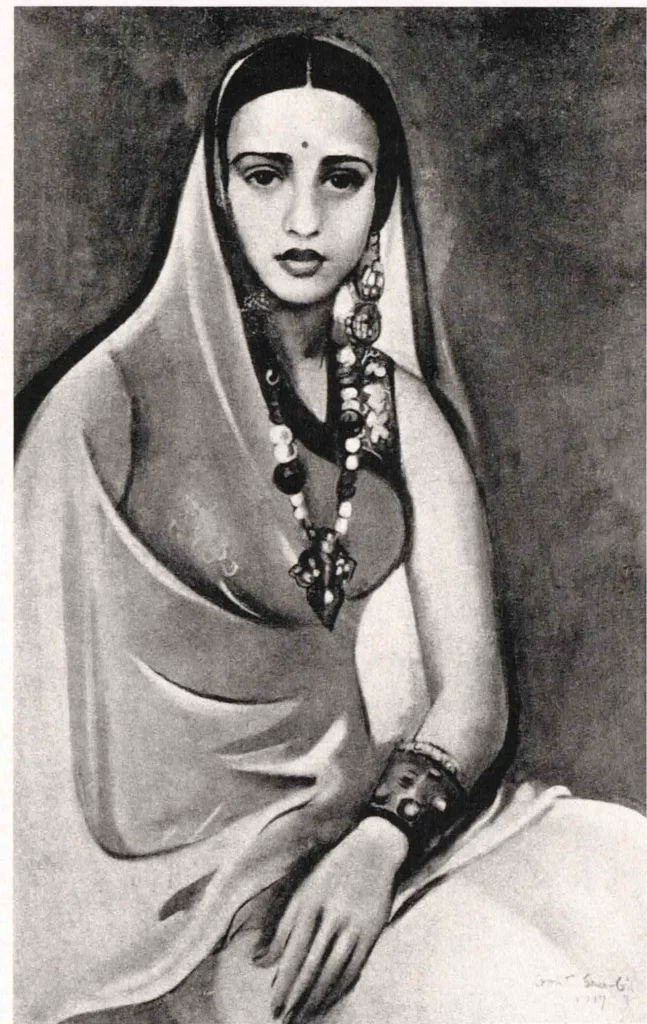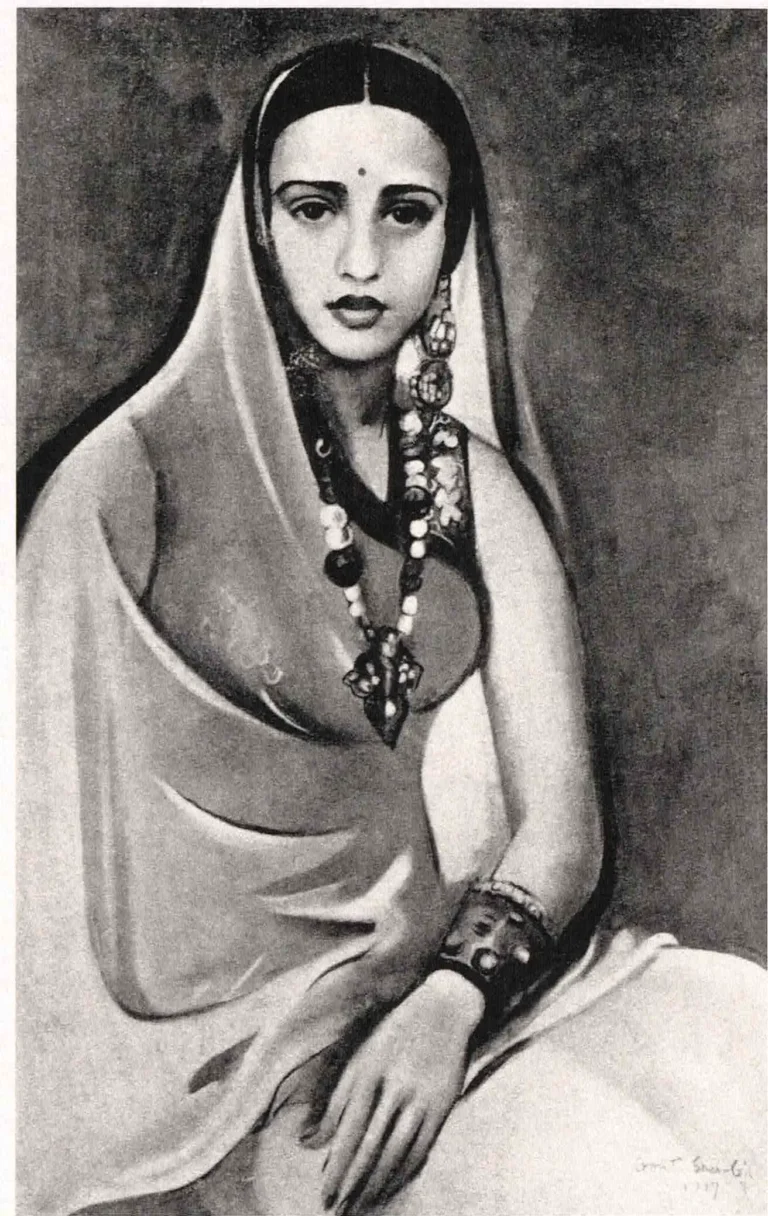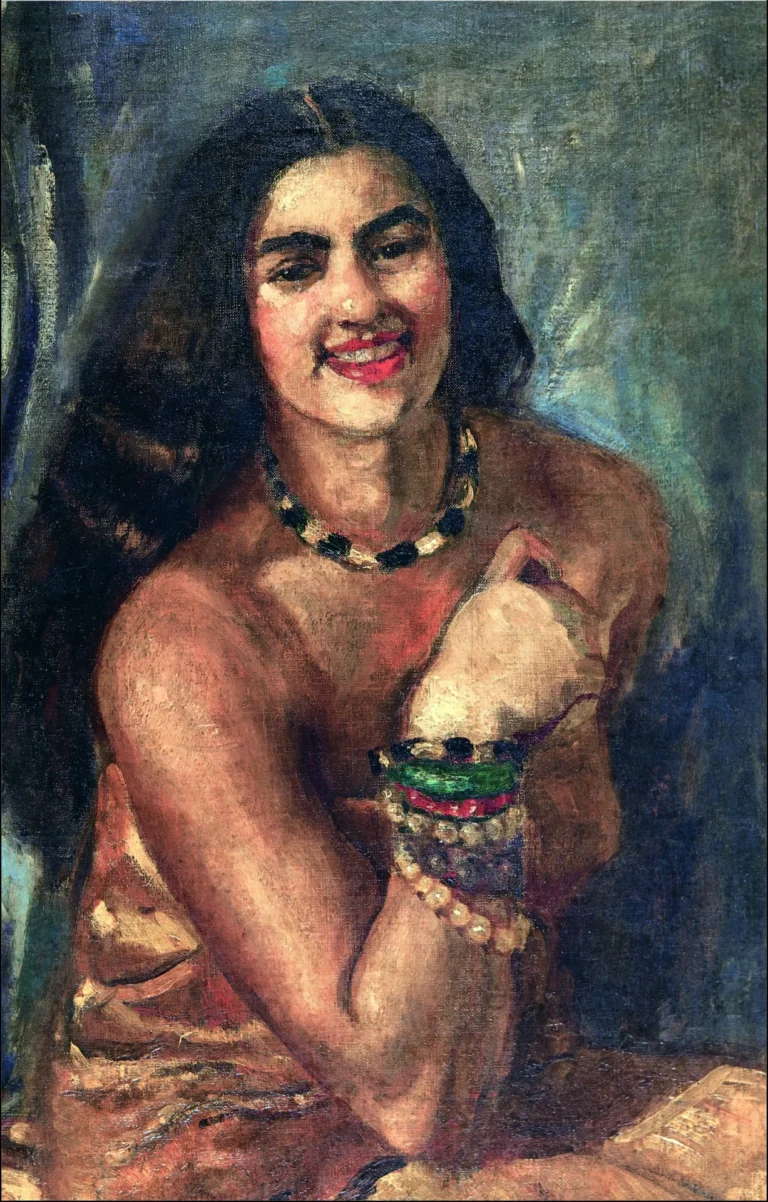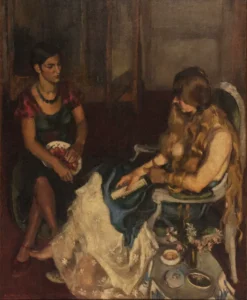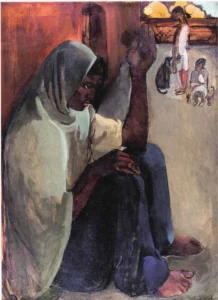Amrita Sher-Gil Self Portrait (1937)
Created in 1937, 'Self Portrait' marks a pivotal moment in Amrita Sher-Gil's career as she embraced her Indian identity after returning from Europe. The portrait features Sher-Gil in a traditional sari, symbolizing her deep connection with Indian culture. This artwork showcases her unique capability to intertwine various cultural influences, revealing her artistic transition and profound self-awareness. It remains a crucial piece in exploring the narrative of modern Indian art and Sher-Gil's significant role within it.
Year 1937
About the Artwork
Did You Know
Liked what you see? Add it to your collection.
Enjoyed reading? Share it.
... continued
Creation and Context
The "Self Portrait" was painted in 1937, a period when Sher-Gil had returned to India and was deeply influenced by Indian art and culture.
Artistic Style and Theme
This self-portrait reflects Sher-Gil's ability to blend different cultural influences. She is depicted wearing a traditional Indian sari, which was a deliberate choice to align herself with Indian culture after her return from Europe. The portrait showcases her nuanced persona, highlighting her transition from a Western to an Indian identity. It also demonstrates her skill in capturing varied moods and moments through her art.
Significance
This self-portrait is part of a series where Sher-Gil explored her identity as a woman and an artist. It marks a significant phase in her artistic development, where she was establishing herself as a modern Indian artist with a distinct style.
Overall Impact
The "Self Portrait" is a testament to Sher-Gil's versatility and her ability to navigate different cultural and artistic identities, making her one of the most important figures in modern Indian art.




